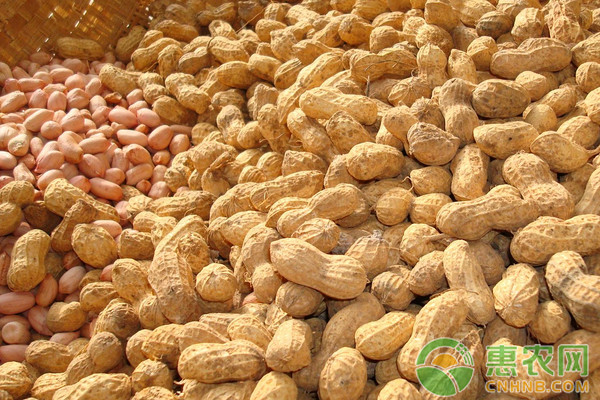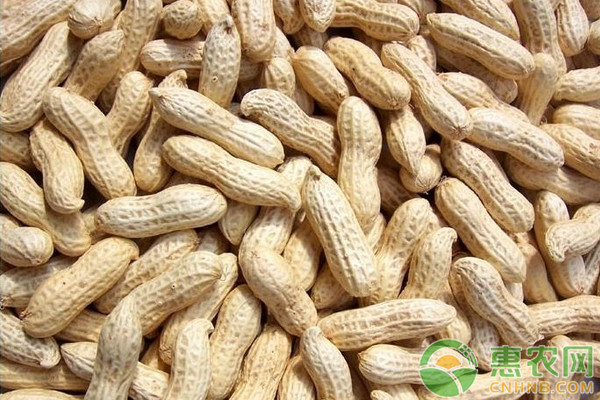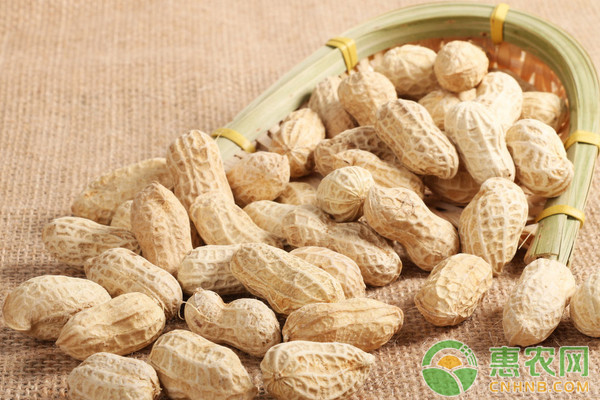Today, Xiaobian wants to tell you a key point of comprehensive cultivation techniques for double-season mulch peanuts. Peanut growers can come to Huinong.com to learn the key points of comprehensive cultivation of double-season mulch peanuts.

1 Peanut growth characteristics
1.1 Seed germination to emergence
When the peanuts are planted to 50% of the seedlings, the first piece of leaves is completely stretched, and the seeds are sprouted. After the seed is inflated and germinated, the peanut radicle will first grow downward, and then the lower embryo will extend upward, causing the cotyledon and germ to break through the soil surface. When the first true leaf is exposed to the surface and fully stretched, it is called emergence. Peanut sprouting seedlings are about 5 cm. The length of seedlings is susceptible to temperature. The ground temperature needs to be >12 °C and the effective accumulated temperature is 116 °C. The minimum temperature for seedling growth is 14 °C, and the maximum temperature is not more than 30 °C.
1.2 Flowering needle period
Peanut plants from the initial flower to 50% of the plants grow the chicken head Gauze belongs to the flowering needle period, the temperature of the flower needle period needs to be >10 °C, the suitable daily average temperature is 23~27 °C, and the effective accumulated temperature is 290 °C.
2 Conditions for peanut planting
1) Water. For every 1 kg of dry matter produced by peanuts, the water consumption is about 450 kg. There is usually a positive correlation between peanut yield and water consumption. 2) Soil. In the fertile land, loose soil, and ventilated fields, it helps the peanut fruit needles to enter the soil, the fruit set development, the rhizobial nitrogen fixation, and root development. 3) Fertilizer. The amount of peanut fertilization increased with the increase of peanut yield. Taking Moguo as an example, the average fertilizer absorbed by the whole plant includes N (nitrogen) 5.45 kg, P2O5 (diphosphorus pentoxide) 1.44 kg, K2O (potassium oxide) 2.62 kg, Ca O (calcium oxide). ) 2 kg.

3 Double-season mulch peanut comprehensive planting technology points
3.1 Choosing good varieties and fine preparation
Excellent varieties are the basic elements to ensure the quality of peanut planting. In the excellent selection process, it is necessary to select varieties of erect, large fruit, medium mature, good commodity, strong disease resistance and high yield. After the test, it was found that Tianfu No.11,12,13, Luhua 9,10, Baisha 1016, Fenghua No.3 and other varieties have good character, with full grain, strong drought resistance, strong resistance to stress, good color and fruit. Renda has great advantages in increasing production potential, and its growth period is about 130 days. It is an ideal peanut variety. The land is mainly sandy loam or sand. In winter, cabbage or Chinese cabbage can be harvested before the end of February. After the harvest of the vegetables, the land will be rebuilt in time, disinfected for 1~2 days, and the opening is about 2 m. It is 10 cm high and has a car surface distance of 30 cm. The soil is not smooth and flat, and the herbicide is sprayed to lay a good foundation for peanut planting.
3.2 Suitable early sowing and reasonable close planting
Choose the right time to plant early, paying attention to reasonable close planting is the key factor to ensure high yield of peanuts. Practice has proved that the earlier the peanut is planted during the suitable sowing period, the longer the growth period is, and the peanut seeds grown are more full and the yield is higher. When the spring peanut is planted by the mulching method, the general sowing time is from late February to early March. When planting, on the basis of ensuring good soil preparation, the nest should be drilled in accordance with the specifications of 7 rows per car and the distance of 20 cm from the nest 2 days before the sowing operation, and ensure that the bottom fertilizer is sufficient, and can be planted after 2 days of fertilization, 2 Granules/wolves, about 19 kg per 667 m. Then, the seeds are covered with decomposed soil and fertilizer, and after the soil is closed, the cover film is operated, and the film is pressed with fine mud. After compaction, a fine mud is sprinkled over the car to prevent the film from being torn by the wind. After the peanut seedlings break out of the soil, the seedlings are taken out in time to prevent the burning of the seedlings, and the wet soil is covered on the membrane pores, and the broken pores are compacted and compacted to achieve heat preservation, water culling and prevention of weeds. The purpose of cultivation is guaranteed to be harvested well by the end of June. The autumn peanut planting time is planted immediately after the harvest of spring peanuts. Generally, it is mulched by mulching or conventional cultivation methods in early July. The sowing specifications and operation methods are similar to those of spring peanuts, and harvesting is achieved before the end of October.
3.3 Rational fertilization
The base fertilizer is an important part of peanut planting and fertilization. The base fertilizer mainly contains N, P, K and other elements. The nesting operation is carried out 2 days before sowing. The amount of fertilizer applied per 667 m of land usually includes 1 000 kg of soil ash or gray ash. , 1 000 kg of pig manure, 13 kg of chlorine-free compound fertilizer (concentration 45%) or 35 kg of super-calcium, mixed with soil and fertilizer, applied to the bottom of the nest, plus 1 500 kg of pig manure Water, 60~90 kg of plant ash is applied at the initial flowering stage, and 0.5 kg of potassium dihydrogen phosphate is applied per 667 m in the late flowering stage to supplement the potassium seedlings. In addition, according to the actual growth of peanuts, root dressing can be properly implemented. For example, in the peanut podging period and the full fruit period, a concentration of 0.25% potassium dihydrogen phosphate or 90 m L of Australian liquid fertilizer (with 50 kg water) can be applied; for the weaker flower seedlings, the concentration can be 1.5%. The urea solution is sprayed with a foliar surface to help the flower seedlings supplement the nutrients. 
3.4 Pest Control
Common pests and diseases of peanuts include aphids, red spiders, blight, virus diseases, leaf spot, rust, etc. The control methods are as follows. 1) Locust control. Each 667 m peanut field was sprayed with a concentration of 10% imidacloprid WP 2500 or a mixture of 4.5% beta-cypermethrin 550 times. 2) Red spider control. Each 667 m peanut field is sprayed with 20 m 15 15% broom net water 40 kg or 60 g ketone emulsifiable concentrate (20% concentration). 3) Prevention and control of blight. Mainly in the peanut seedling period, 5% Jinggangmycin aqueous solution 2000 times liquid or 20% Jinggangmycin wettable powder 3 500 times liquid. 4) Virus prevention. The virus A wettable powder was sprayed with 500 times liquid spray, sprayed once every 7 days, and sprayed twice continuously. 5) Leaf spot control. Spray control was carried out with 65 g of 70% thioxazine wettable powder and 50 kg of water. 6) Prevention and control of rust. Use 12.5% ​​quick-keeping WP 4,000 times or 50g 80% mancozeb WP to 50 kg per 667 m peanut field.
3.5 Timely harvest
In order to achieve the high yield of peanuts, it is necessary to choose the right time to harvest. If the harvest is too early, the kernels will dry up; if it is harvested too late, it will cause the kernels to sprout and affect the harvesting effect. In order to ensure reasonable harvest timing, the specific characteristics of the peanut growth period can be combined to observe the plant characteristics, and the pods can be harvested after they stop growing. Spring peanuts are harvested more than before the end of June. In order to reduce the contamination of the peanut fields after harvesting, it is necessary to ensure that the film is removed cleanly and thoroughly, and the residual film is collected and treated to prevent soil pollution.
4 Conclusion
The mulch peanut has good planting effect of moisturizing, warming, easy to harvest, early sowing and increasing yield. At the same time, planting double-season mulch peanut can effectively promote the upgrading of agricultural industrial structure and increase the economic crop planting area in China. Therefore, the double-season mulch peanut planting technology is adopted. Peanut cultivation according to requirements can effectively increase peanut production and increase farmers' income.
COVID 19 Products,Faceshield Face Shield,Plastic Face Shield,Medical Face Shield
NINGBO YINGMED MEDICAL INSTRUMENTS CO.,LTD , https://www.chinayingmed.com